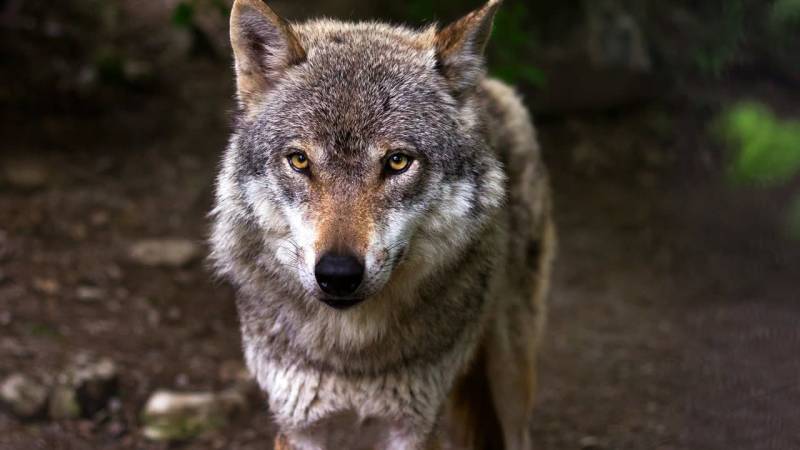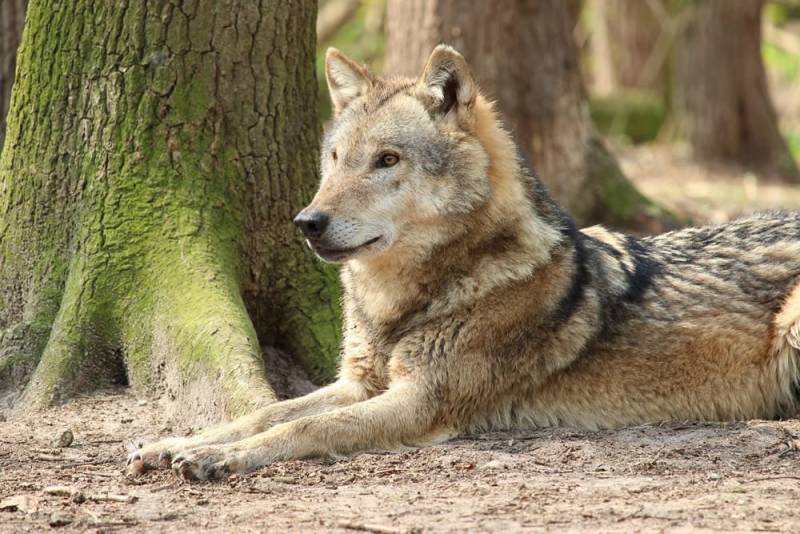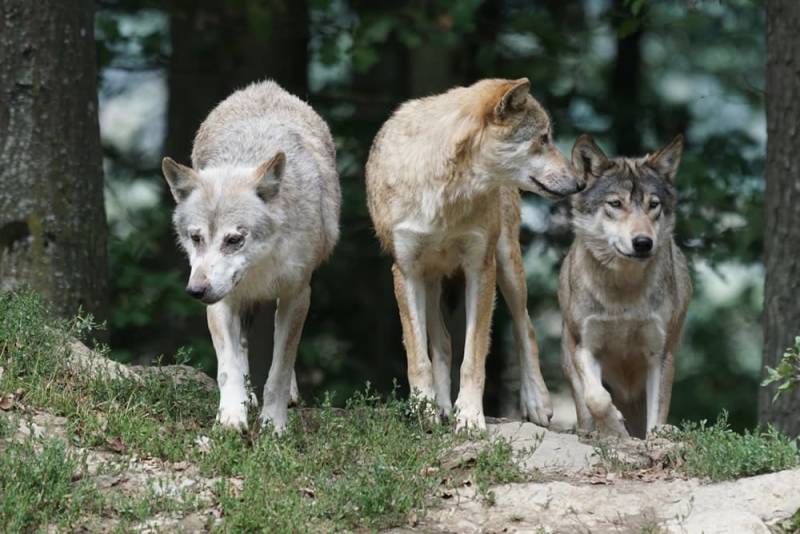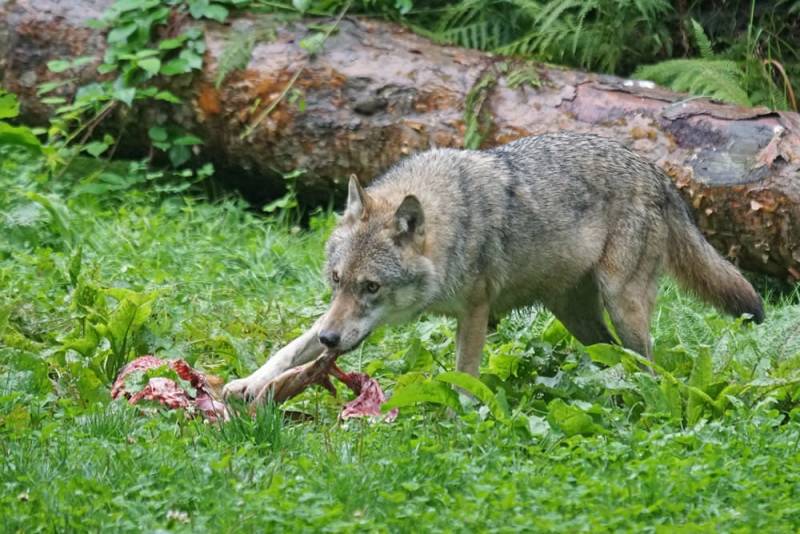How to behave correctly when encountering a wolf?
The wolf is a very shy animal. What if you really do encounter a wolf? This article will help you deal with the situation calmly.


From Martin Gebhardt. Check out my “About me” page.
👉 The key facts from this guide
- Wolves are very shy animals and usually avoid direct contact with humans. If you encounter a wolf, it will likely stop, observe you, and then continue on its way.
- If you come across a wolf, you should also stop, not approach the wolf, and adopt a dominant body posture. Address the wolf with a loud, strong voice and clap your hands to intimidate it.
- You are more likely to encounter a young wolf, as they are more curious and less shy. However, you should never feed or pet a wolf, as they could become accustomed to humans.
- If you are walking your dog in a potential wolf area, you should keep it on a leash, as wolves can react very aggressively to free-roaming dogs.
- It is dangerous to encounter a wolf that is currently busy with a kill. In this case, you should behave particularly calmly and slowly and carefully retreat.
- The wolf's biggest enemy is humans. Wolves are heavily poached and have been systematically hunted by humans in many places for several centuries.
The wolf is a very shy wild animal.
It avoids direct encounters with humans.
A wolf notices the presence of a human early on and typically seeks to flee.
But what if you really find yourself facing a wolf?
This article will help you deal with the situation calmly.
Encountering a Wolf
Wolves are not like what you see in numerous horror movies or in the Brothers Grimm tales. The wolf is not a notorious man-eater.
It harbors a natural distrust for humans. Encounters with wolves in the wild are extremely rare and usually only brief. However, they are not uncommon.
Especially early in the morning and late at night, wolves are known to pass through parts of settlements.
At this time, most people are asleep. Therefore, the buildings do not pose a threat to the animals.
If a wolf needs to travel from one side of a settlement to another, the shortest path is straight through the settlement. This is by no means unnatural behavior.
Before I discuss the encounter with a wolf, I have collected some information about its way of life.

About Wolves
The wolf is the largest predator in the dog family. They are pack animals, meaning they live in large family groups.
From about the 15th century, wolves were systematically hunted in the regions of Central Europe.
Until today, they have been almost eradicated. since the end of the 20th century, the animal has been under protection in many countries.
At first, try to avoid screaming. You should only do that if speaking loudly doesn't help.
Lone Wolf
It is more likely that you will encounter a young wolf.
They are not as experienced as a fully grown wolf. The young wolves are curious and sometimes even approach humans.
They are less cautious and also less shy. Therefore, do not be surprised if the wolf even approaches you.
However, you must never feed or pet a wolf, no matter how tempting it may seem.
Otherwise, they will become accustomed to humans. They will return to the same spot again and again.
If the wolf comes towards you, do not run away. Also, do not turn your back on it, but move back slowly with backward steps.
Speak loudly and clap your hands. Shout at the wolf if it does not step back. Throw something at it. This will not make it aggressive but increase its fear.
A Pack
It is very unlikely that you will encounter a whole pack of wolves.
If you come across several wolves, they are usually young without their parents. They are then exploring alone and are curious.
In this case, apply the same rules.
Speak loudly to the wolves, back away slowly, do not turn your back to them, shout at them and throw something at them.
Do not forget, you must not move too quickly.

These situations are not dangerous for you. However, it may be problematic in the following scenarios.
With your dog
If you're out and about with your four-legged friend in a potential wolf area, keep him on a leash. In many areas, there is already a leash law that you should follow.
Wolves can react very aggressively to freely roaming dogs.
In this case, it happens that the wolf approaches the dog. He simply ignores your presence.
In this situation, you are the best protection for your dog.
Speak to the wolf loudly and clap your hands. Make sure to keep your dog on a shorter leash.
Try to calm the dog down. If a wolf is attacked or barked at by a dog, you will find yourself in an unpredictable situation.
A dog is usually considered a competitor by the wolf.
Therefore, you must exercise extreme caution when encountering a wolf with your dog.
Attack
Another dangerous scenario is when you come across a wolf that is busy with an attack.
This means he has killed prey and is currently busy eating it.
In this case, behave especially calmly. Slowly and cautiously step back. Make sure the wolf does not notice you.
Under no circumstances should you approach a wolf that is currently busy with an attack.
The wolf will defend its prey. Keep your eyes on the wolf as you move backwards.

The Wolf's Greatest Enemy
The wolf itself has no natural enemy. It is at the top of the food chain.
However, it does happen that wolves kill each other. This happens in the course of territorial fights within a pack.
However, traffic accidents, injuries during hunting and diseases also lead to the death of wolves.
But the greatest enemy of the wolf is human.
Although the wolf is under strict nature conservation in many areas, the animal is heavily poached.
Additionally, humans have systematically hunted wolves for several centuries in many places. This is also why wolves instinctively fear humans.
If you encounter a wolf, you should memorize its appearance and report the sighting. Researchers and conservationists request this. Certain areas have their own offices for this purpose. Inform yourself about this. The police are generally a good point of contact for reporting a wolf sighting.
Have you ever encountered a wolf?
How did you feel? How did you behave, and how did the animal behave?
Do you fear such an encounter or do you want to experience it?
Feel free to share your experiences and adventures in the comments.
Also read my article on other dangers in the forest.


Author of the guide
Martin Gebhardt
Hey, I'm Martin. On my blog, you will learn the basics and numerous details about living in the wild. I think survival, bushcraft and the good life in nature are the keys to happiness. Find me here on Instagram or on YouTube. You can find more about my mission on the About Me page.
Was this guide helpful?
35 people found this guide helpful.
4.89 out of 5 points (36 Ratings)
Comments (0)
This post may contain affiliate links. So if you click on the links and make a purchase, I will receive a small commission at no additional cost to you. Click here, to learn more about it.



